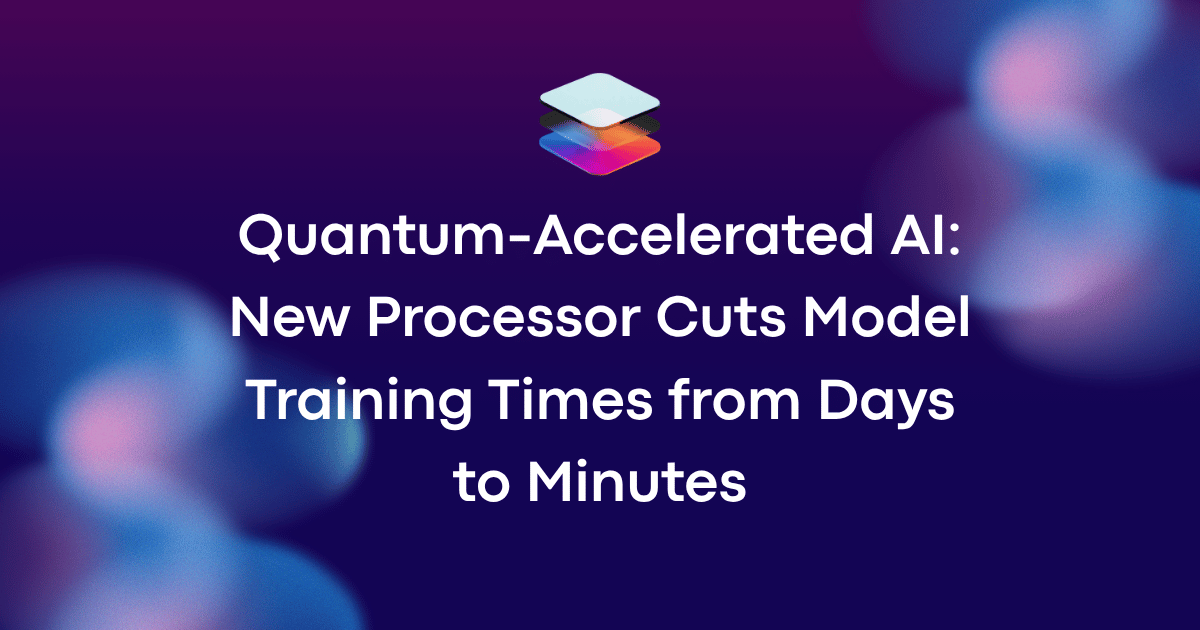
uminai Blog
Quantum-Accelerated AI: New Processor Cuts Model Training Times from Days to Minutes
Training state-of-the-art AI models can take days or even weeks on classical hardware. Recent advances in quantum computing have changed the game. In 2025, the first commercial quantum-accelerated processors hit the market—promising to shrink model training pipelines from days to mere minutes. This post explains how these hybrid processors work, what benefits they deliver, and how your team can get started today.

The Growing Cost of AI Training
- Large language and vision models now exceed hundreds of billions of parameters
- Compute bills for a single training run can top six figures on cloud GPU clusters
- Slow iteration cycles hold teams back from rapid experimentation
Without faster hardware, product teams spend more time waiting than innovating.
How Quantum-Accelerated Processors Work
-
Hybrid Architecture
- Classical CPU or GPU handles data loading, preprocessing, and control logic
- Quantum processing units (QPUs) accelerate linear algebra kernels like matrix multiplication and eigenvalue decomposition Learn more about IBM’s hybrid quantum model in IBM Quantum System Two deployment in Japan
-
Quantum-Inspired Algorithms
- Variational quantum algorithms map neural network operations to quantum circuits
- Approximate solutions run on noisy intermediate-scale quantum (NISQ) hardware Explore Google’s Willow chip benchmarks in How Quantum AI Is Breaking Through
-
Seamless Software Stack
- Open-source frameworks like Qiskit and PennyLane expose quantum kernels via familiar APIs
- High-level libraries let you annotate layers for quantum execution See McKinsey’s overview in The Year of Quantum: From Concept to Reality in 2025
Key Benefits for Your AI Projects
- Speed Increase Training steps that took hours now complete in minutes, speeding up hyperparameter sweeps and model tuning
- Cost Efficiency Quantum bursts replace dozens of parallel GPU instances, lowering cloud spend by up to 70 percent
- Energy Savings Reduced runtime translates to a smaller carbon footprint for large-scale AI workloads
- Competitive Edge Faster R&D cycles let you prototype novel architectures before competitors catch up
Top Use Cases to Prioritize
- Transformer-Style Models Quantum kernels excel at attention and feed-forward layers
- Graph Neural Networks Eigenvalue computations map naturally to quantum hardware
- Reinforcement Learning Rapid policy evaluation reduces wall-clock time for complex simulations
- Generative Adversarial Networks Accelerated matrix operations improve stability and convergence speed
Getting Started with Quantum AI
- Evaluate Your Workloads Identify model components that dominate compute time (e.g., large matrix multiplies, spectral methods)
- Choose a Platform Providers like IonQ and Quantinuum offer trial access and pay-as-you-go pricing
- Integrate via Plugin Install quantum accelerator plugins (e.g., TensorFlow Quantum, PyTorch) and annotate layers for offload
- Benchmark End to End Run A/B tests comparing purely GPU runs versus hybrid quantum-accelerated training
Best Practices for Smooth Adoption
- Start Small Prototype on a subset of your model to validate speed and stability gains
- Manage Noise Use error mitigation techniques and fallback to classical execution when quantum errors spike
- Automate Switching Implement dynamic offload logic so your pipeline seamlessly shifts between CPUs, GPUs, and QPUs
- Educate Your Team Host internal workshops on quantum principles and best practices for model design
Where Quantum AI Fits in Your Roadmap
Quantum-accelerated training isn’t a replacement for GPUs but a force multiplier:
- Reserve quantum offload for the heaviest compute kernels
- Use classical hardware for data I/O, augmentation, and lightweight layers
- Plan for hybrid clusters combining classical and quantum nodes
Conclusion
Quantum-accelerated processors are no longer a research novelty. They deliver real-world performance gains that can cut model training times from days to minutes, reduce costs, and accelerate innovation cycles. By identifying the right workloads, integrating quantum kernels, and following best practices, your team can gain a decisive advantage in AI development. Get started now and turn weeks of training into minutes of progress.